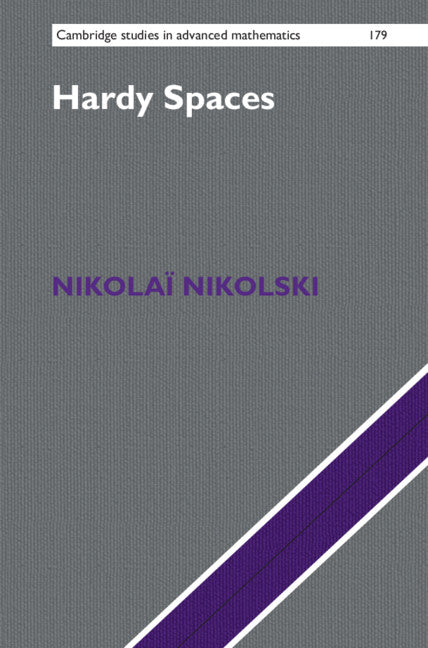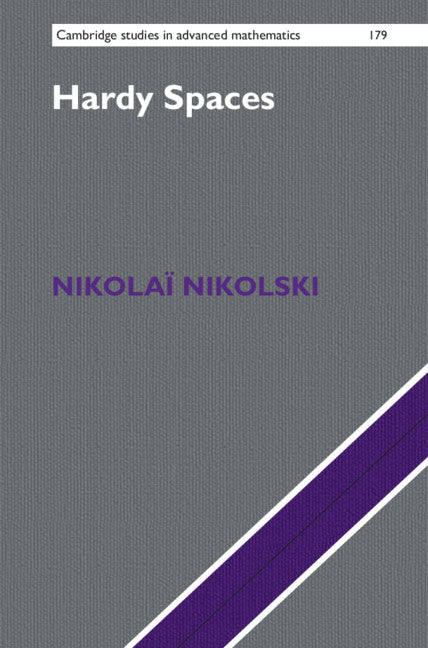Freshly Printed - allow 4 days lead
Couldn't load pickup availability
Hardy Spaces
Graduate text covering the theory of Hardy spaces from its origins to the present, with concrete applications and solved exercises.
Nikolaï Nikolski (Author), Danièle Gibbons (Translated by), Greg Gibbons (Translated by)
9781107184541, Cambridge University Press
Hardback, published 31 January 2019
294 pages, 41 b/w illus. 75 exercises
23.5 x 15.6 x 2 cm, 0.54 kg
'To help the reader through this material, Nikolski is both an experienced educator and writer and knows how to present the material, efficiently … so the student can learn as well as appreciate the subject. Nikolski also gives us plenty of historical vignettes of the main figures in the development of Hardy spaces and, especially for the student, gives several appendices for those needing some gentle reminders of measure theory, complex analysis, Hilbert spaces, Banach spaces, and operator theory.' William T. Ross, Bulletin of the American Mathematical Society
The theory of Hardy spaces is a cornerstone of modern analysis. It combines techniques from functional analysis, the theory of analytic functions and Lesbesgue integration to create a powerful tool for many applications, pure and applied, from signal processing and Fourier analysis to maximum modulus principles and the Riemann zeta function. This book, aimed at beginning graduate students, introduces and develops the classical results on Hardy spaces and applies them to fundamental concrete problems in analysis. The results are illustrated with numerous solved exercises that also introduce subsidiary topics and recent developments. The reader's understanding of the current state of the field, as well as its history, are further aided by engaging accounts of important contributors and by the surveys of recent advances (with commented reference lists) that end each chapter. Such broad coverage makes this book the ideal source on Hardy spaces.
The origins of the subject
1. The space H^2(T). An archetypal invariant subspace
2. The H^p(D) classes. Canonical factorization and first applications
3. The Smirnov class D and the maximum principle
4. An introduction to weighted Fourier analysis
5. Harmonic analysis and stationary filtering
6. The Riemann hypothesis, dilations, and H^2 in the Hilbert multi-disk
Appendix A. Key notions of integration
Appendix B. Key notions of complex analysis
Appendix C. Key notions of Hilbert spaces
Appendix D. Key notions of Banach spaces
Appendix E. Key notions of linear operators
References
Notation
Index.
Subject Areas: History of mathematics [PBX], Stochastics [PBWL], Probability & statistics [PBT], Numerical analysis [PBKS], Complex analysis, complex variables [PBKD], Real analysis, real variables [PBKB], Number theory [PBH]


